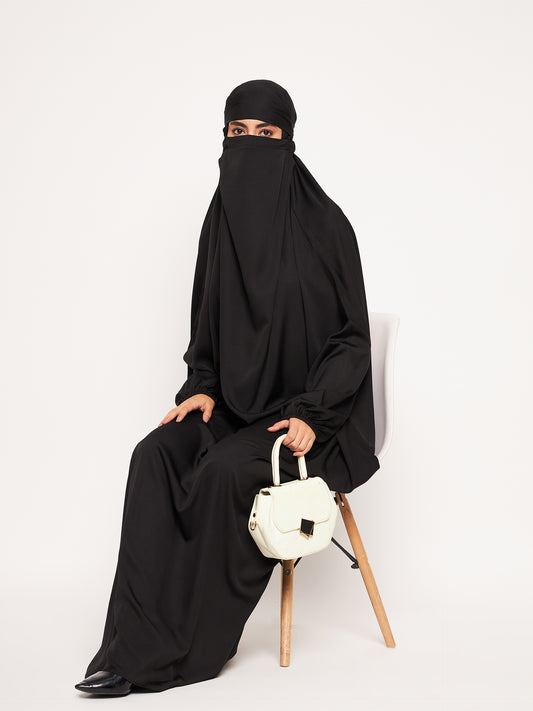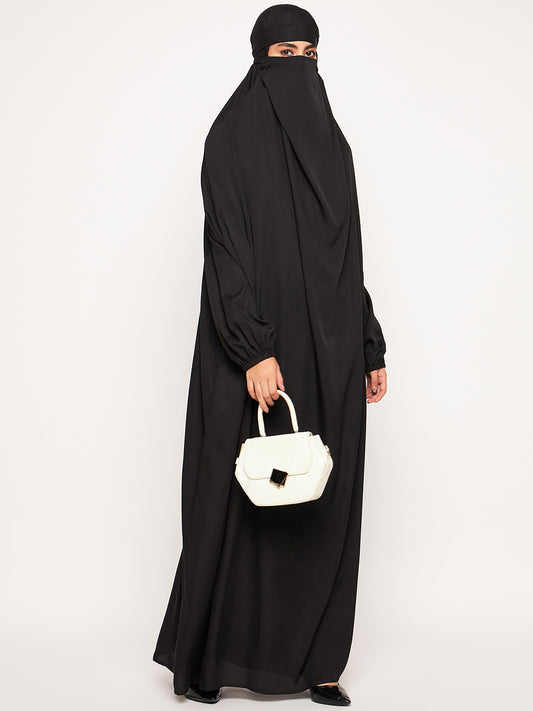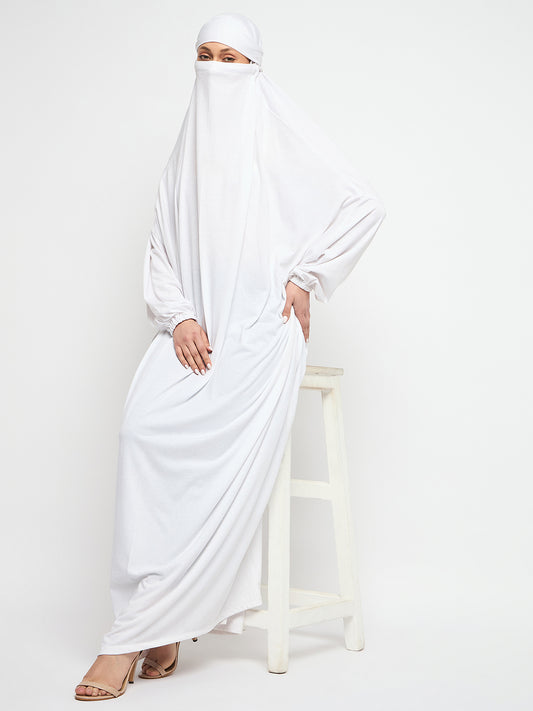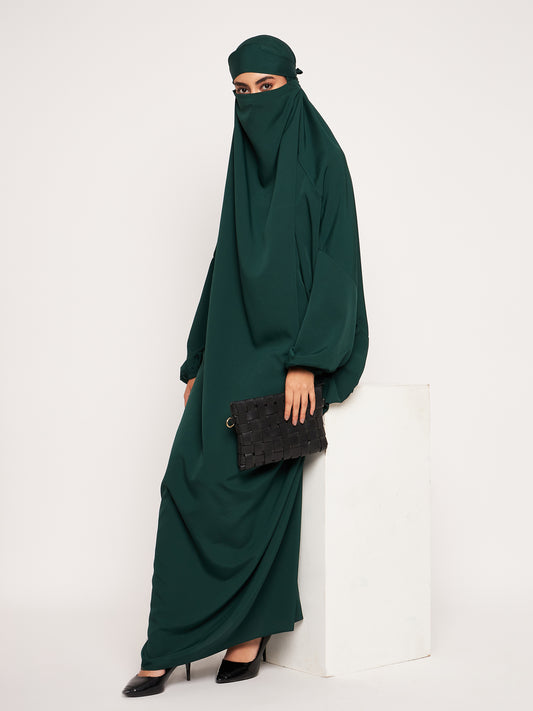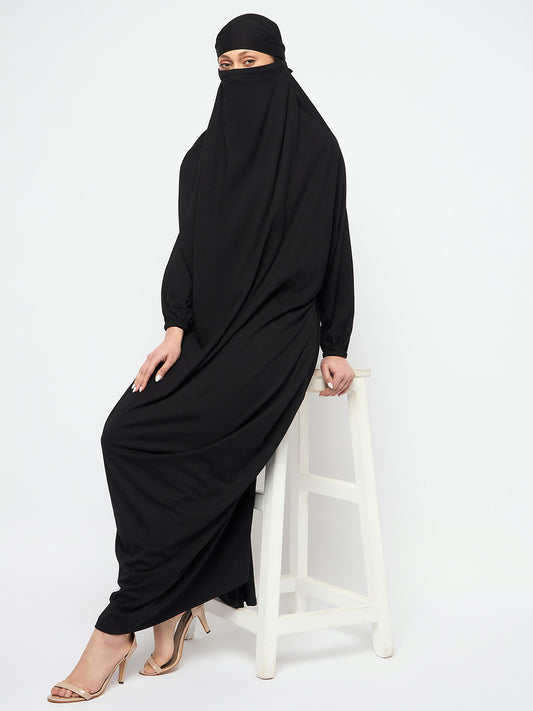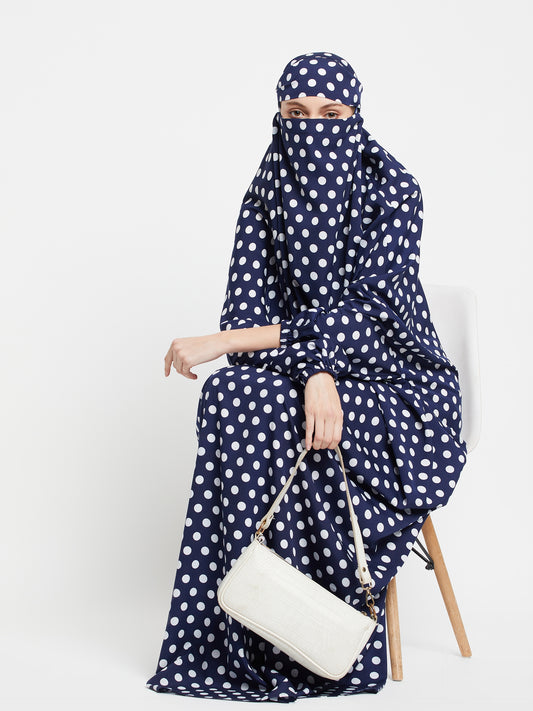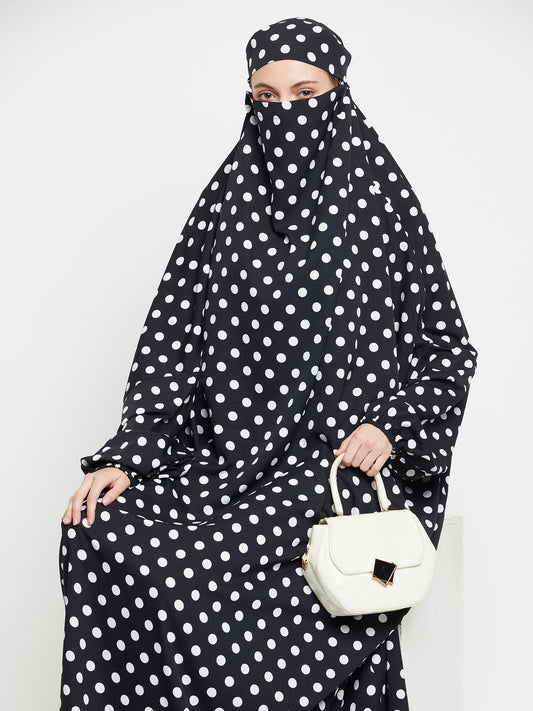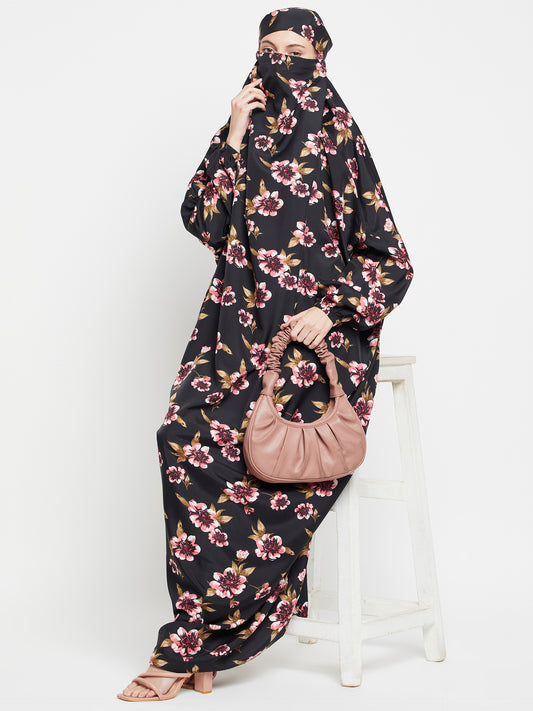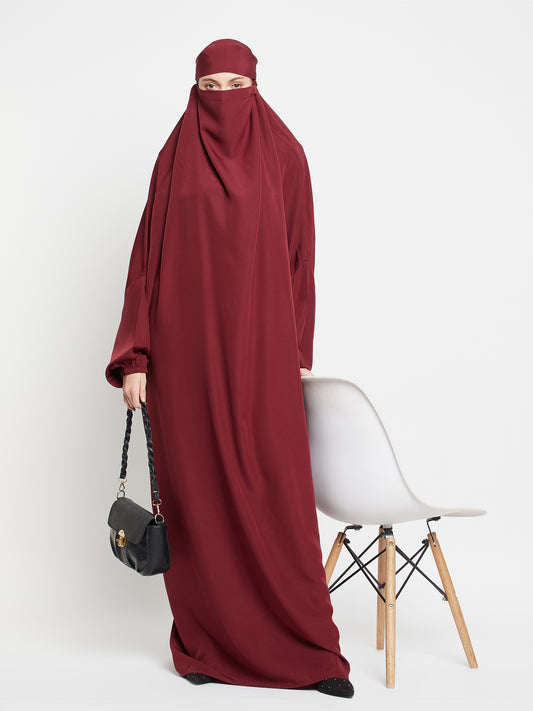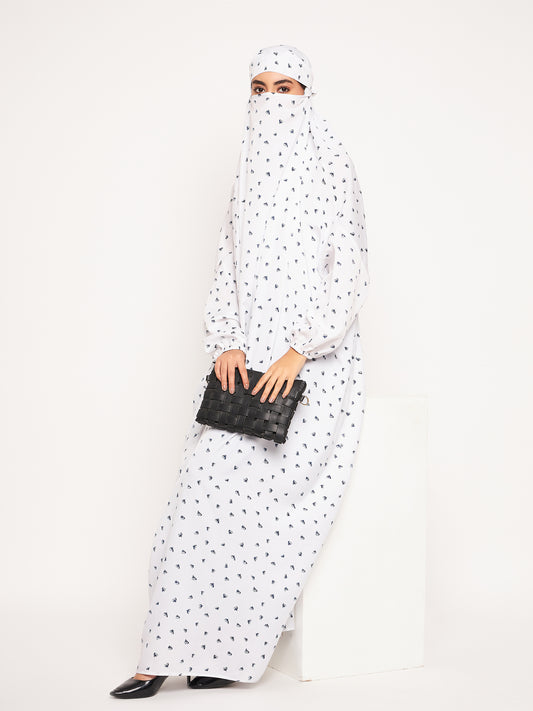Jilbab Abaya Outfit
For many women, wearing a jilbab is a personal choice that allows them to adhere to their faith's requirements for modest clothing while expressing their cultural identity. However in the present fashion centric world many women also wish to express their individual styles in the clothing they wear. To ensure a smooth blend of these two, at Nabia we provide a beautiful collection of islamic apparels. Jilbab abaya, being one of them, is typically a long robe or dress that covers the entire body except for the face, hands, and feet. It is designed to adhere to the Islamic principles of modesty and decency. It was prevalent in many Middle Eastern and Islamic cultures for centuries. It evolved over time and gained widespread appeal for not just practical usage and majestic flow, but also for its ability to symbolise principles of humility and modesty in the fashion spectrum. Also being referred to as an abaya jilbab dress, it is a bridge between tradition and modernity, connecting the past to the present.
The Timeless Charm of Abaya Jilbab Dress
There is a slight variation in the traditional abayas and jilbab abayas. While traditional ones are typically open in the front with an ability to be pulled together, the jilbab abaya tends to be a closed garment. What makes it stand out is the comfort and ease that comes along with it. The ample coverage provided by it, ensures that women can go about their daily activities without any constraints. If one wants to buy jilbab abaya, the fascinating feature it upholds is the smooth, well-groomed and breathable material, which helps it to be worn even in warmer climates. It comes in a range of styles, all the way from contemporary to traditional. Apart from swaying its flow in blacks and solids, it also glows and stands out with a tinge of embellishments on it. Each available design contributes to enhancing the charm of those who wear them.
Jilbab Abaya Shop : Ideal Destination for All Occasions
Jilbab abayas are also characterised by the invariable versatility offered in styling various outfits. When it comes to everyday attire, it can also be paired like a jilbab abaya niqab. Styling it in a casual way seamlessly combines comfort and style, making it perfect for tasks like running errands, going to college, or heading to workplace, taking a stroll etc. Jilbab abaya shop, with a plethora of varieties also contributes in making it a cherished companion for countless women for travelling. Its roomy design and lightweight materials render it ideal for exploring into new places. A lot of women opt for adorned jilbab abayas for special events like weddings, parties, and gatherings. These abayas can exude the same level of glamour as high-end gowns, displaying magnificent fabrics. Amid cultural and religious festivities like Eid, muslim women can wear it as a gesture of tradition and respect. At these gatherings, the abaya jilbab dress takes on the role of displaying unity and cultural heritage, fostering a sense of pride.

